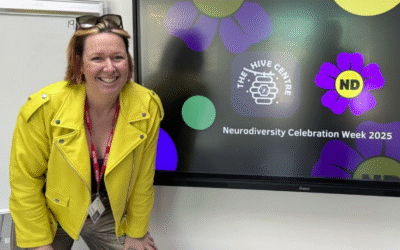Strong communication is at the heart of successful businesses. What happens when your communications do not consider your biases? For sales and commercial teams, it’s all about language, tone, and reaching people. Often these communications can be loaded with biases without people realising. The way people communicate can unknowingly alienate potential buyers. Often, these things go unnoticed. How often has a prospect gone quiet? How much have we all normalised the term ‘ghosted ‘?
In a 2023 report from Salesforce, they found that 76% of customers say how a company treats people matters more than the product it sells. How do your team communicate? Are there things you could all work on in how you engage with people? Do you consider the diverse people in the companies you are talking to? Working on inclusive communication helps brands to earn trust, build loyalty and access markets.
How do biased communications show up?
When we communicate and create communications to reach people like us, we can easily fall into biases. We reflect ourselves, use references we understand fall into stereotypes and patterns that resonate with us. This can manifest itself in different ways. Some examples are:
- Pronouns we use – we might default to certain pronouns when describing decision-makers
- References and metaphors – using examples rooted in our own lives and perspectives
- Values and interests – using examples that are about us and our lives
- Behaviours – if we are used to talking over or interrupting some people, that can have a huge impact
- Images and stories – sales and marketing are all about storytelling, what stories are we using though?
The language and tone that teams use to communicate with prospects will usually reflect your own culture and perspectives, unless you take time to think about who you want to reach. I remember a time when a team I worked with in South Korea. They had collected a list of words and phrases used by a UK team that made no sense to them. What proof in what pudding?
Commercial biases
When we communicate, we want to reach people. So, considering all of this will impact your commercial results too. Don’t be one of the companies that publish communication and have to retract due to mistakes. Here are some examples of communications and campaigns that failed when perspectives were not considered:
- Tesco – Ramadan Tweet in 2021, they tweeted supporting Ramadan but featured non-halal food
- JD Sports – Christmas ad in 2022 – they featured urban Black British culture, but fell into stereotypes
- Nivea – ‘White Is Purity’ in 2017 – they used the tagline ‘white is purity’ without considering the connotations
- UK Government Treasury – Fatima’s Next Job Could Be in Cyber in 2020, who can forget this one? They used a stereotype to market their recruitment campaign
- Heinz – 2024 family campaign, theyused a Black family enforcing cultural stereotypes
These are all examples where you wonder who was involved in creating these campaigns. Did they speak to different people, and if they did, did they listen to feedback? Or were these decisions driven from the centre, without considering different people, different languages and different tones?
Communication strengths
Working on the language you use improves employee engagement as well as customer connections. If you can communicate considering who you want to reach, you show people that you value differences and different lives. This will show people that you consider different perspectives in your products and services. This builds trust, which helps build all commercial relationships.
Here are some actions you can think about to help with this:
- Communication materials – review everything you use to communicate, from emails, to presentation decks to your website. Are you using language including jargon and acronyms that people will not understand? How inclusive is the information visually? Who do you represent in case studies and stories?
- Meetings in person – consider how you approach meetings and initial communications. Use language that does not fall into the biases of assuming things about people before you start interactions with them.
- Cultural competence – encourage everyone to think about different people and lives. Talk and share the different things people experience to help build confidence in communications.
Communication is not just a skill, it reflects your company culture. If biases creep in, this will impact your client relationships. Whether you’re scaling in SaaS or breaking new ground in gaming, communicating inclusively and thinking about biases will mean that you create greater impact.
Want to know how we can help you with all of this? Message us, and subscribe below to our From The Edges newsletter.




